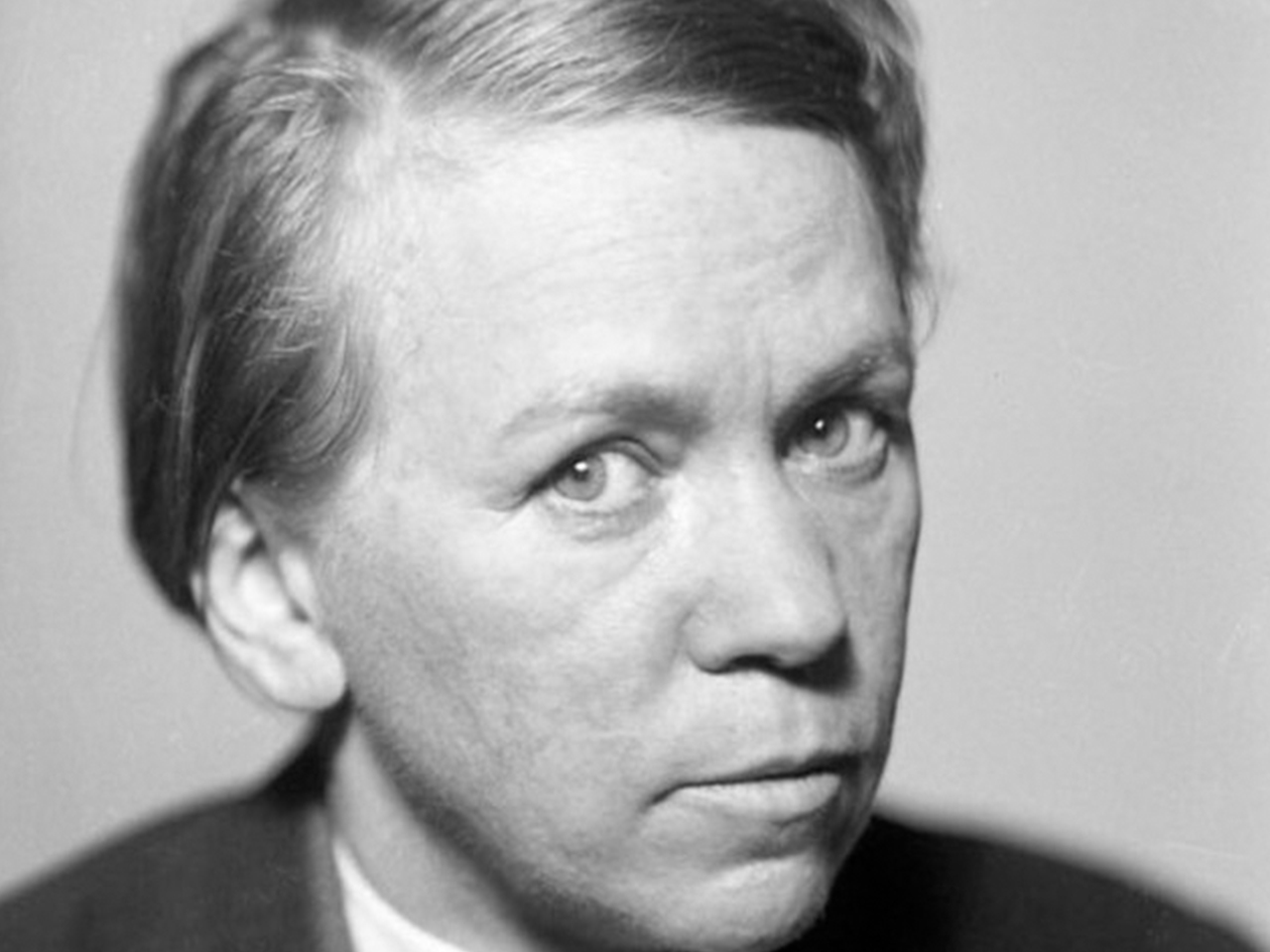Siri Derkert
Siri Derkert (1888–1973), one of the few prominent female artists in Swedish art history, is known for her highly personal expressionist style and monumental public commissions, often political in nature. Many of her works explore her interest in women’s liberation and environmental issues, fields in which she was a forerunner, and raised concerns still relevant today. Derkert’s evolution from modernism in the 1910s to the political public art she became known for in the 1960s is a testament to the myriad ways an artist can engage with the private and the political. At a time when Sweden lacked female suffrage and marriage placed women under their husband’s guardianship, Derkert’s work was shaped by her experience as a single mother of three. As a result, her imagery from the 1920s and 30s centers on family and friends, while her motifs expand beyond domestic life during World War II, when her political involvement deepened.
Works from the period 1943-1954
Fogelstadkvinnor, Charcoal on paper, 29 × 23 cm
Ada, Pencil and charcoal on paper, 28 × 31 cm
Ada, Pencil and crayon on paper, 21,5 × 34,5 cm
Fogelstadkvinnor – Sjungande kvinnor kring Elsa Stenhammar, Charcoal and red chalk on paper, 29,5 × 23 cm
Fogelstadkvinnor – Honorine Hermelin (sittande, stående, huvud), Charcoal and watercolour on paper, 28,5 × 22,5 cm
Fogelstadkvinna – Kerstin Hesselgren, Charcoal on paper, 22,5 × 36 cm
Fogelstadkvinna – Elisabeth Tamm (4 stående variationer), Pencil and charcoal on paper, 28,5 × 22 cm
Fogelstadkvinnor – kören kring Elsa Stenhammar vid pianot, Charcoal on paper, 36 × 23,2 cm
Courtesy of Skövde Art Museum
The eight works by Swedish artist Siri Derkert (1888-1973) and the public artwork Senapsträdet och himlens alla fåglar, placed in Skövde City Library, are strongly influenced by the Fogelstad Women’s Citizens School. Founded by the pioneering Fogelstad group, the Women’s Citizens School served as a vital centre for political education and women’s empowerment in 20th-century Sweden. Derkert first visited Fogelstad in 1943 and continued to return not only as a participant, but also as a keen observer and inspired artist. The intellectually vibrant and feminist atmosphere prompted her to create numerous sketches and drawings, and among her subjects were influential women such as Honorine Hermelin and Ada Nilsson, whom she portrayed with striking directness. For Derkert, Fogelstad was more than a place of learning: the supportive community and shared ideals profoundly influenced the development of Derkert’s artistic voice.

